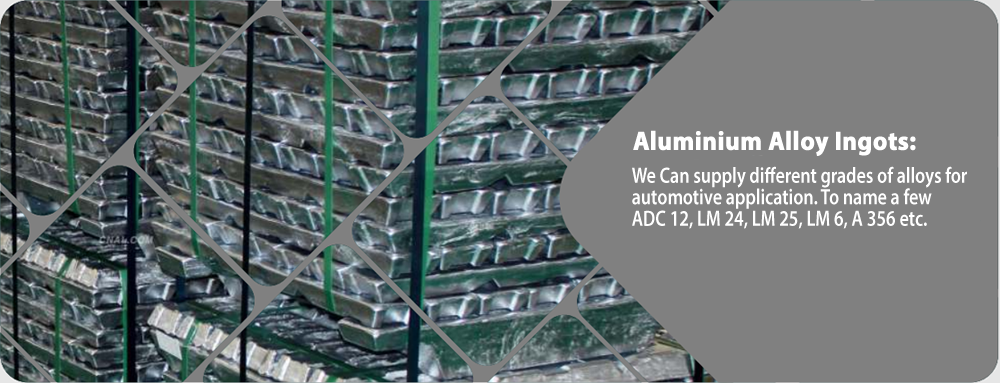ADC12 is an alloy used in creating die-casting components. Also known as A383, this aluminum material is cost-efficient and facilitates manufacturing processes. It is the most widely-used choice of metal for many die-castings produced internationally.
ADC12 Equivalent Materials
ADC12 can be replaced with equivalent materials, including 383 USA/ASTM and ADC12 China GB/T and Vietnam/Japan JIS.
Characteristics of ADC12
ADC12 provides resistance to cracking under heat and is perfect for components that enhance die-filling characteristics. The aluminum properties are of excellent quality. It is easy to cast and holds dimensional stability, which offers an ideal balance of value and performance.
In addition to affordability, there are other advantages of ADC12, including good corrosion resistance, outstanding mechanical properties, and good machinability due to higher silicon levels and lower levels of copper.
ADC12 is a modified ADC10 alloy used when needing additional die filling precision. This alloy does not offer as much strength as ADC10, but it does perform well when completing complicated aluminum die-casting projects. ADC12 is also much easier to work with when compared to A360. Selecting aluminum alloys best-suited for the job is critical at the design stage. ADC12 is a material worth considering for your manufacturing and development needs.
Uses of ADC12
ADC12 can be used for any die casting shape and offers limitless possibilities. It is an excellent choice when building complex parts at large volumes in a cost-efficient manner. Additionally, ADC12 has been studied extensively, which means that its application is dependable. The alloy is best known for its ideal combination of efficient material properties while maintaining production workability.
This alloy has numerous uses and purposes. It is most commonly used in electronic equipment, motor vehicle components, appliances, furniture, power tools, LED lighting, die casts, bicycles, machinery, communications equipment, electric vehicles, carpentry, valves, digital technology, engine brackets, and more.
ADC12 Physical Properties
| Physical Properties | Metric | US/Imperial |
| Density | 2.823 g/cc | 0.1020 lb/in³ |
ADC12 Mechanical Properties
| Mechanical Properties | Metric | US/Imperial |
| Hardness, Brinell | 85 | 85 |
| Hardness, Knoop | 109 | 109 |
| Hardness, Rockwell B | 53 | 53 |
| Hardness, Vickers | 96 | 96 |
| Tensile Strength, Ultimate | 331 MPa | – |
| Tensile Strength, Yield | 165 MPa | – |
| Elongation at Break | 2.5 % | 2.5 % |
| Fatigue Strength | 140 MPa | – |
| Machinability | 50 % | 50 % |
| Shear Strength | 199 MPa | – |
ADC12 Electrical Properties
| Electrical Properties | Metric | US/Imperial |
| Electrical Resistivity | 0.00000750 ohm-cm | 0.00000750 ohm-cm |
ADC12 Thermal Properties
| Thermal Properties | Metric | US/Imperial |
| Heat of Fusion | 389 J/g | 167 BTU/lb |
| CTE, linear | 20.8 µm/m-°C @Temperature 20.0 – 100 °C |
11.6 µin/in-°F @Temperature 68.0 – 212 °F |
|
22.1 µm/m-°C
@Temperature 20.0 – 300 °C |
12.3 µin/in-°F @Temperature 68.0 – 572 °F |
|
| Specific Heat Capacity | 0.963 J/g-°C | 0.230 BTU/lb-°F |
| Thermal Conductivity | 92.0 W/m-K | 638 BTU-in/hr-ft²-°F |
| Melting Point | 516 – 582 °C | 961 – 1080 °F |
| Solidus | 516 °C | 961 °F |
| Liquidus | 582 °C | 1080 °F |
ADC12 Processing Properties
| Processing Properties | Metric | US/Imperial |
| Annealing Temperature | 177 – 260 °C | 350 – 500 °F |
| 260 – 371 °C | 500 – 700 °F | |
| Casting Temperature | 616 – 699 °C | 1140 – 1290 °F |
ADC12 Component Elements Properties
| Component Elements Properties | Metric | US/Imperial |
| Aluminum, Al | 77.3 – 86.5 % | 77.3 – 86.5 % |
| Copper, Cu | 3.0 – 4.5 % | 3.0 – 4.5 % |
| Iron, Fe | <= 1.3 % | <= 1.3 % |
| Magnesium, Mg | <= 0.10 % | <= 0.10 % |
| Manganese, Mn | <= 0.50 % | <= 0.50 % |
| Nickel, Ni | <= 0.50 % | <= 0.50 % |
| Other, total | <= 0.50 % | <= 0.50 % |
| Silicon, Si | 10.5 – 12 % | 10.5 – 12 % |
| Tin, Sn | <= 0.35 % | <= 0.35 % |
| Zinc, Zn | <= 3.0 % | <= 3.0 % |



